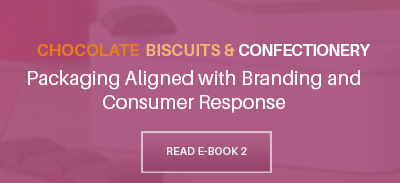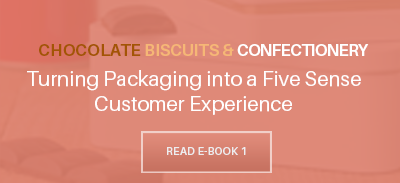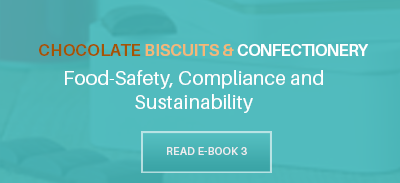The packaging of biscuits and confectionary involves creativity, as well as paying attention to safety regulations and consumer behaviors. Here's a deeper look at what a food packaging designer should be aware of when deciding on suitable materials.
 Common Materials in Food Packaging
Common Materials in Food Packaging
- cardboard
- aluminum
- metal
- plastic
- glass
Aluminum foil wrapping is effective for preserving food products since it can take on various shapes and keep food secure from air and other environmental elements. Assorted packaging comprised of cardboard cartons and cell trays is used often for decor, especially for premium chocolates. Foil is flexible and comes in various thicknesses.
 Glass is popular because it provides strong protection and can be shaped many different ways, although it can break in the shipping process. Keep in mind, however, that glass contains sodium hydroxide, and that trace particles may mix with distilled water within the container, if stored for longer than a year.
Glass is popular because it provides strong protection and can be shaped many different ways, although it can break in the shipping process. Keep in mind, however, that glass contains sodium hydroxide, and that trace particles may mix with distilled water within the container, if stored for longer than a year.
Plastic is widely used for packaging due to cost, convenience and shiny appearance, but it also creates a lot of waste that offends environmental groups.
Usually once a plastic package is opened, the food must be consumed right away, unless it includes a zip lock.
One of the big problems with plastic other than it is a toxin, is that it can be absorbed by other chemicals. When plastics are littered into natural water systems, they can be consumed by fish who spread toxins when eaten by humans. One of the reasons that certain governments are calling for plastic reduction is that it has contributed to the destruction of marine life.
Making Food Safety a Top Priority
 Product safety is a primary concern among food packaging designers. The food must be preserved for weeks or months without disruption to the contents. Packaging must be able to withstand environmental elements such as dirt, dust, moisture, mold and bacteria. Even a small air-leak can lead to food spoiling. Plastics eventually degrade, whereas metals provide more lasting power. Metals work well for food packaging due to the strong unbreakable material.
Product safety is a primary concern among food packaging designers. The food must be preserved for weeks or months without disruption to the contents. Packaging must be able to withstand environmental elements such as dirt, dust, moisture, mold and bacteria. Even a small air-leak can lead to food spoiling. Plastics eventually degrade, whereas metals provide more lasting power. Metals work well for food packaging due to the strong unbreakable material.
Any food product that oxidizes quickly needs an air-tight container. Fresh produce can be preserved well with thin sheets of foil. Tin cans have low toxicity levels and are not susceptible to rust or corrosion. Along with other metals, tin and aluminum provide the most effective protection against contamination. Storing food at the proper temperature is also important to health concerns.
Growing Acceptance of Sustainability
One of the reasons food marketers want to embrace sustainability is because consumers increasingly are making greener choices. People are reading more about the environment and want to be part of the solution instead of the problem. The food packaging industry is increasingly embracing corporate social responsibility by developing more sustainable products and packaging. It's helping improve trust with consumers by sharing broad values.
Materials that can be recycled, such as tinplate and aluminum, have gained favor among food packagers. Both materials can be used over and over and are flexible enough to fit a wide variety of shapes and sizes. The reason packaging shapes matter is that they correspond with visual stimulation. Big packages communicate different values than small packages, just as uncommon shapes are perceived as special to consumers, compared with common shapes.
Both tinplate and aluminum can be mass produced quickly and affordably. Tinplate can be used for several different types of air-tight lids over aluminum cans. Tinplate and aluminum are much more reliable than plastic bags when it comes to protecting the product in the shipping process. Extending shelf life as much as possible is an important factor in retailing and sustainability planning. Sustainability can be measured in many ways, including quality. Both aluminum and tin can be recycled endlessly without any loss of quality.
Liquids and powders can be packaged in multiple ways, which makes flexible materials like aluminum practical. Aluminum is a popular packaging material in the beverage industry because it commands the highest recycle rate of any other packaging materials.
Government Compliance
Cutting corners on food packaging safety can lead to serious fines issued by regulatory bodies of the United States and European Union. Not only must labelling be accurate and avoid misleading language, it must also contain specific information about the product and manufacturer. The main reason for packaging regulations is to protect the consumer from digesting spoiled food that can cause health hazards. It's essential for food marketers to protect their reputations, since massive recalls can hurt a company's image.
Packaging Material Considerations
- chemical composition of the food product
- aesthetic values
- shape, size, weight and capacity
- heat-resistant qualities
- type of fastening device
Conclusion
Packaging has become a form of branding in the modern consumer world. Therefore, it must be eye-catching enough to stand out in a retail setting and meet the requirements for food safety and shelf life.






